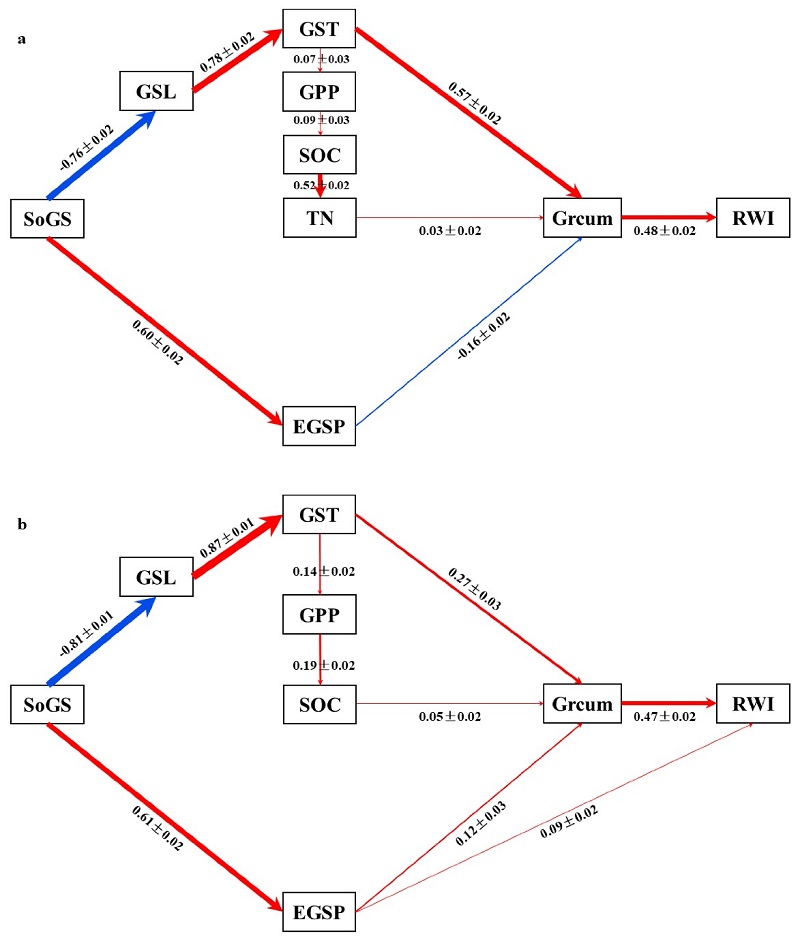

Climate change is profoundly affecting phenology, especially in the Northern Hemisphere. Nevertheless, how tree radial growth responds to phenological shifts remains to be explored. The boreal forest in the Northern Hemisphere is one of the largest biological communities on Earth, and its tree growth dynamics are significant for global change. It is necessary to analyze the specific response process of tree growth to phenology, so as to provide a theoretical basis for promoting the accurate assessment of carbon sink potential on a larger scale and for predicting forest dynamics.
Under the guidance of Professor Huang Jianguo, Professor Ding Xiaogang and Associate Researcher Ma Qianqian, Dr. Kang Jian of Forest Growth and Global Change Group divided the research area into North and south by constructing a tree ring chronology network in Central Asia at 49° N latitude. The results of the model-based simulation indicated an obvious advance to the start of growing season (SoGS) in the period from 1959 to 2010/2016. Correlation analyses showed that there were significant negative correlations between the SoGS and radial growth in the north of the study area but not in the south. Path analyses indicated that radial growth between north and south did not respond consistently to the earlier SoGS. In the north, radial growth mainly benefited from the alleviation of low temperature limitations, thereby elevating the cumulative growth rate. But in the dry south, aridity stress in the early growing season counteracted the positive effect of temperature on tree radial growth through decreasing the cumulative growth rate. In general, we determined that an earlier SoGS influences tree radial growth by regulating the cumulative growth rate.
The relevant results are as follows: “An earlier start of growing season can affect tree radial growth through regulating cumulative growth rate "was published in the Top journal Agricultural and Forest Meteorology (IF5=6.9). Dr. Kang Jian is the first author of the paper, and Professor Ding Xiaogang from Guangdong Academy of Forestry is the corresponding author. The research was supported by the National Natural Science Foundation of China and the Natural Science Foundation of Guangdong Province. The thesis links: https://doi.org/10.1016/j.agrformet.2023.109738

Fig. 1. Path diagrams for north (a) and south (b).
The numbers in the path diagrams represent the mean and standard error of standardized path coefficients (significant at p < 0.05),
with the blue and red arrows representing negative and positive effects, respectively.

